Unleashing creativity in the realm of embroidery involves exploring various possibilities, including the prospect of dyeing embroidery thread.
The question, “Can the embroidery thread be dyed?” opens the door to a world of customization and personalization. This inquiry is about the technical feasibility and the artistic potential it brings to the craft.
In this exploration, we delve into the fascinating realm of dyeing embroidery thread, unraveling the techniques and considerations that allow crafters to enhance their projects with a spectrum of vibrant and personalized colors.
Whether you’re a seasoned embroiderer or a novice exploring the wonders of thread art, understanding the possibilities of dyeing embroidery thread adds a new dimension to your creative toolkit.
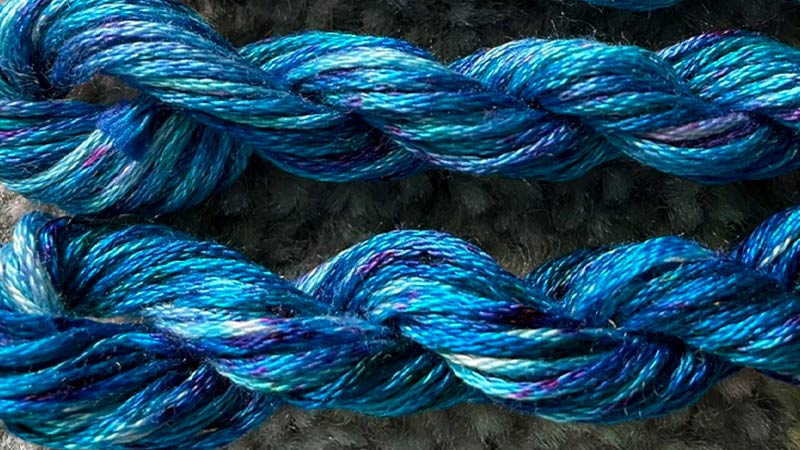
Can Embroidery Thread Be Dyed?
Can the embroidery thread be dyed? Embroidery thread can be dyed to achieve custom colors for personalized stitching projects. The process involves immersing the thread in a dye solution, allowing it to absorb the desired color.
Whether you want to match specific fabric hues or create unique shades for intricate designs, dyeing embroidery thread provides a versatile and creative option.
Remember that natural fibers, like cotton or silk, may respond differently to dyes than synthetic threads. Experimentation with dyeing techniques and color combinations can lead to a vibrant spectrum of threads, adding an extra layer of customization to your embroidery endeavors.
So, embrace the possibilities and explore the world of custom-colored embroidery threads with the option to dye embroidery thread according to your artistic vision.
How To Dye Embroidery Thread?
Embarking on the creative journey of customizing your embroidery thread through dyeing embroidery thread opens a world of possibilities.
Whether you’re aiming for vibrant hues or subtle shades, mastering various dyeing methods empowers you to add a personal touch to your stitching projects.
Here are seven simple methods to guide you through the process of transforming your embroidery thread into a spectrum of colors.
Immersion Dyeing
Immerse embroidery thread in a dye bath, allowing it to absorb the color. Adjust the dye concentration and duration for varied shades, creating a palette that suits your project perfectly.
Tie-Dye Techniques
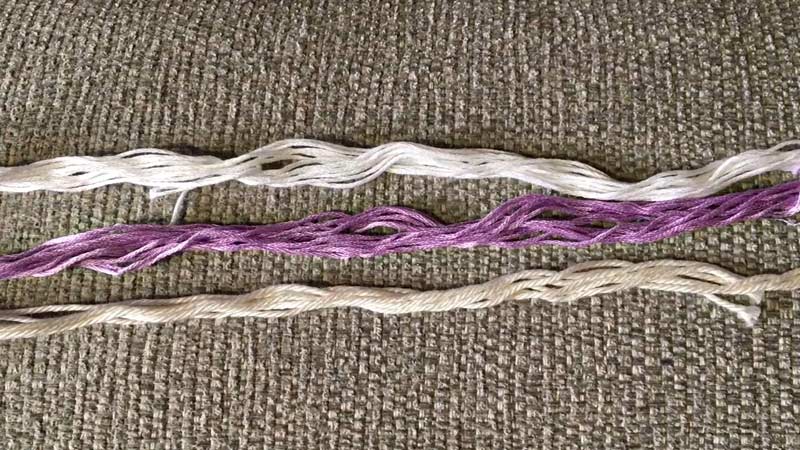
Apply tie-dye techniques to embroidery thread for a playful and unique look. Bind sections of the thread with rubber bands before immersing them in different colors, resulting in a vibrant and patterned effect.
Gradient Dyeing for Ombre Effects
Achieve stunning ombre effects by gradient dyeing. Submerge one end of the embroidery thread in a darker dye solution and gradually lighten it as you move toward the other end, creating a seamless transition of colors.
Hand-Painting with Brushes
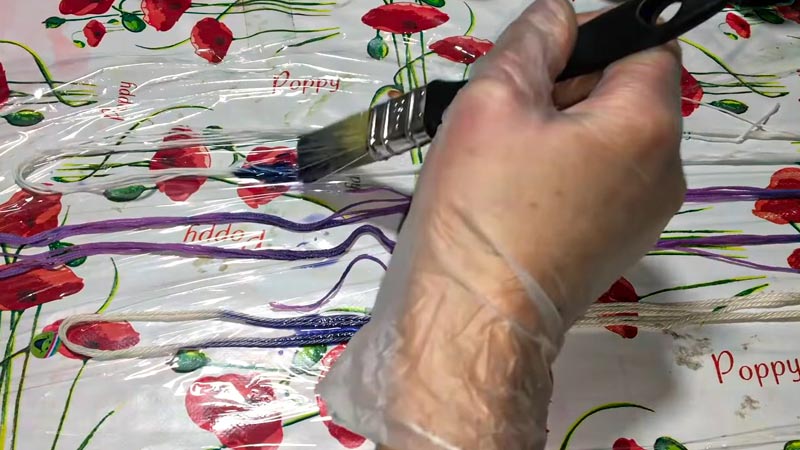
Exercise precision by hand-painting embroidery thread with brushes. This method allows for intricate designs and detailed color application, providing a personalized touch to your threads.
Dip-Dyeing for Quick Color Transformation
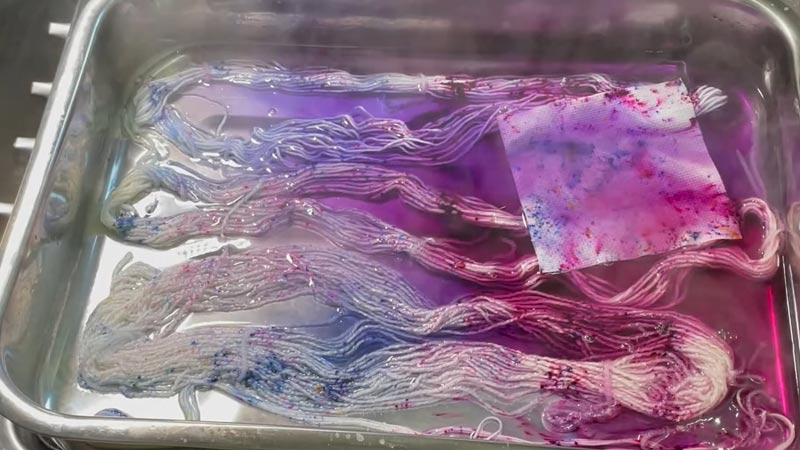
Opt for dip-dyeing when you seek a quick color transformation. Dip sections of embroidery thread into different dye baths for varied hues, ensuring an efficient and visually appealing result.
Ice Dyeing for Artistic Patterns
Experiment with ice dyeing to create unique and artistic patterns on your embroidery thread. Place ice cubes on top of the thread covered with powdered dye, allowing the melting ice to disperse the colors in captivating patterns.
Using Food Coloring for a DIY Approach
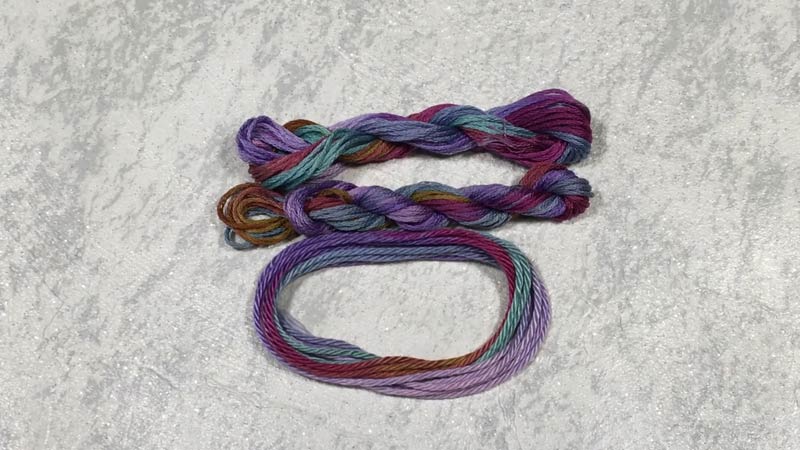
Embrace a DIY approach by using food coloring to dye embroidery thread. Create your custom color palette by mixing various food colors, offering a safe and accessible method for personalized thread hues.
Mastering these seven methods of dye embroidery thread empowers you to elevate your stitching projects with a personalized spectrum of colors.
Experiment with different techniques, blend shades, and enjoy the freedom to infuse your creative expression into every embroidery thread.
7 Dye Embroidered Logo Patterns
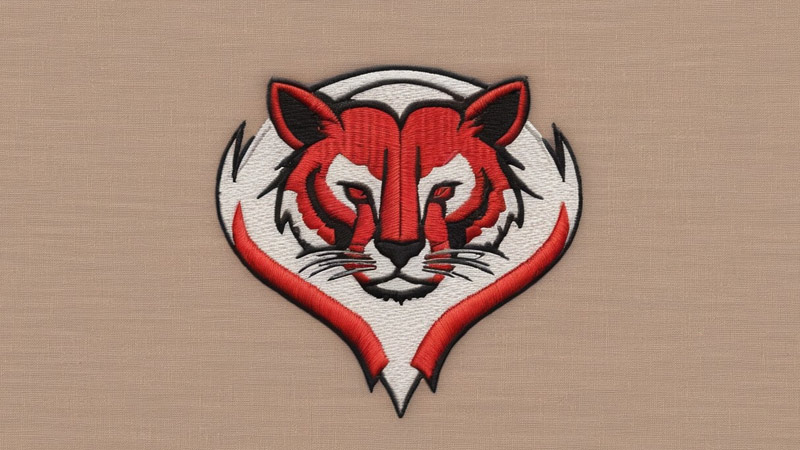
Elevating your brand identity through unique and vibrant embroidered logo patterns involves creatively exploring dyeing techniques.
These seven dyeing methods will transform your logos, adding a personalized and eye-catching touch to your embroidered designs.
1. Gradient Radiance
Create a stunning gradient effect on your embroidered logo, transitioning seamlessly from one color to another.
This method, achieved through careful dye concentration adjustments, brings a captivating radiance to your logo, ensuring it stands out with a dynamic and contemporary flair.
2. Tie-Dye Fusion
Infuse a sense of playfulness into your logo with tie-dye fusion. This technique intertwines multiple colors in a vibrant and random pattern, offering a lively and unconventional aesthetic that captivates attention and gives your logo a distinct and memorable character.
3. Ombre Elegance
Introduce an elegant touch to your logo by incorporating an ombre effect. Subtle transitions from a dark to a light hue or vice versa add depth and sophistication to your embroidered design, making it visually striking and aligning with modern design sensibilities.
4. Watercolor Whimsy
Capture the essence of watercolors in your logo by employing this whimsical dyeing technique. By delicately blending multiple hues, you can infuse a painterly quality into your embroidered logo, creating a unique and artistic impression that resonates with creativity.
5. Monochromatic Simplicity
Embrace the power of simplicity with a monochromatic dye approach. Choose a single color and various shades to create a logo with a subtle yet impactful tonal range. This method exudes sophistication and clarity, ensuring your logo communicates a refined and timeless message.
6. Electric Neon Burst
Infuse energy into your logo with an electric neon burst of colors. This bold and attention-grabbing dyeing method, incorporating vibrant neon shades, adds a modern and dynamic edge to your embroidered logo, making it perfect for brands seeking a youthful and high-energy vibe.
7. Vintage Wash Charm
Convey a vintage aesthetic through a charming wash effect on your logo. This dyeing method imparts a gently faded and worn appearance reminiscent of retro designs.
The result is a logo with a timeless appeal, effortlessly blending nostalgia with contemporary branding elements.
Exploring these seven dyeing patterns for embroidered logos allows you to tailor your brand’s visual identity with creativity and flair.
From subtle gradients to bold bursts of color, each method offers a unique opportunity to infuse your logos with personality and style.
FAQs
Is it possible to dye different types of embroidery thread?
Yes, different types of embroidery thread, including cotton, polyester, and silk, can be dyed. However, the type of dye and the dyeing process may vary based on the fiber content, so it’s essential to consider the material before dyeing.
Can you achieve a gradient effect when dyeing embroidery thread?
Absolutely. Adjusting the dye concentration or using a dip-dyeing technique can achieve a gradient effect. This allows crafters to create threads with a smooth transition of colors, adding depth and visual interest to their embroidery projects.
Are there safe methods to dye embroidery thread without damaging it?
Yes, there are safe dyeing methods that won’t damage embroidery thread. Techniques like hand-painting or using food coloring provide a gentle approach, ensuring the thread retains its integrity while acquiring vibrant and custom colors.
Can I use natural dyes for embroidery thread?
Natural dyes, such as those derived from plants, fruits, or vegetables, can be used to color embroidery thread. This eco-friendly approach offers a range of subtle and earthy tones, allowing crafters to experiment with sustainable and organic dyeing methods.
Is dyeing embroidery thread suitable for intricate designs?
Yes, dyeing embroidery thread is suitable for intricate designs. Crafters can employ various dyeing techniques, including tie-dye or hand-painting, to add personalized and detailed colors to their threads, enhancing the intricacy of their embroidery projects.
Conclusion
In concluding our exploration into the question, “Can embroidery thread be dyed?” the answer is a resounding yes, accompanied by a world of creative opportunities.
The ability to infuse embroidery threads with custom colors opens avenues for personalized stitching projects and elevates the artistry of embroidery itself.
The diverse range of dyeing techniques, from subtle gradients to bold patterns, empowers crafters to bring their artistic vision to life.
As we embrace the colorful possibilities of dyeing embroidery thread, we embark on a journey where each stitch becomes a brushstroke, and every creation is a unique masterpiece, reflecting both skill and individuality.
Leave a Reply